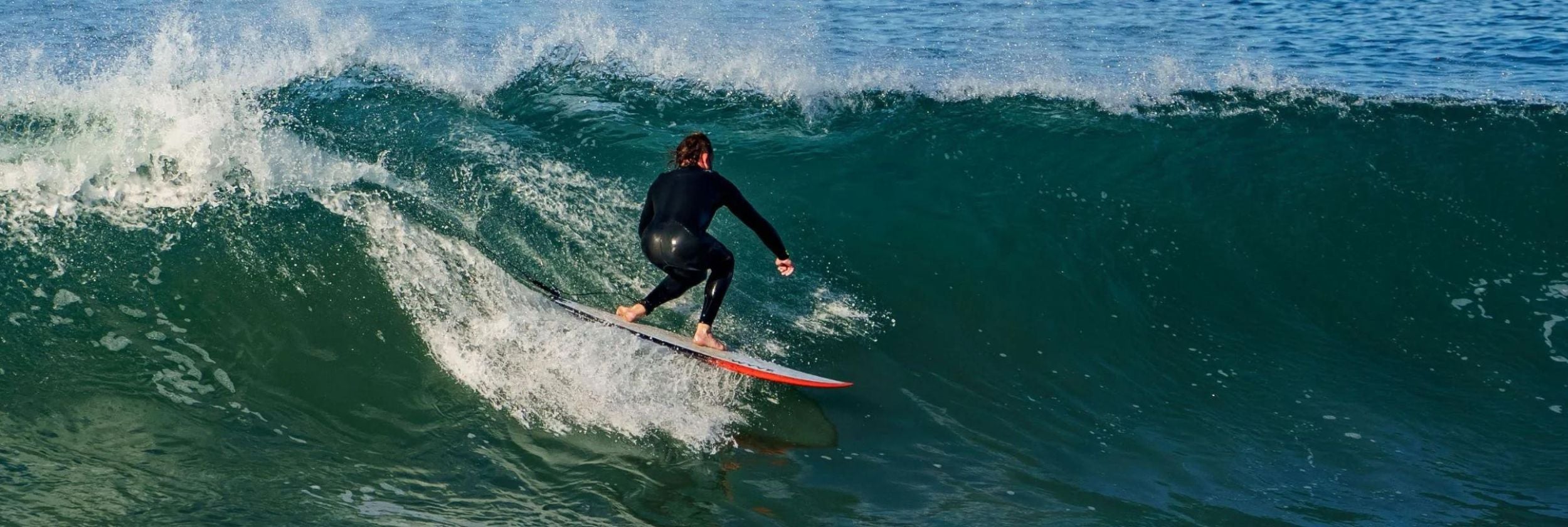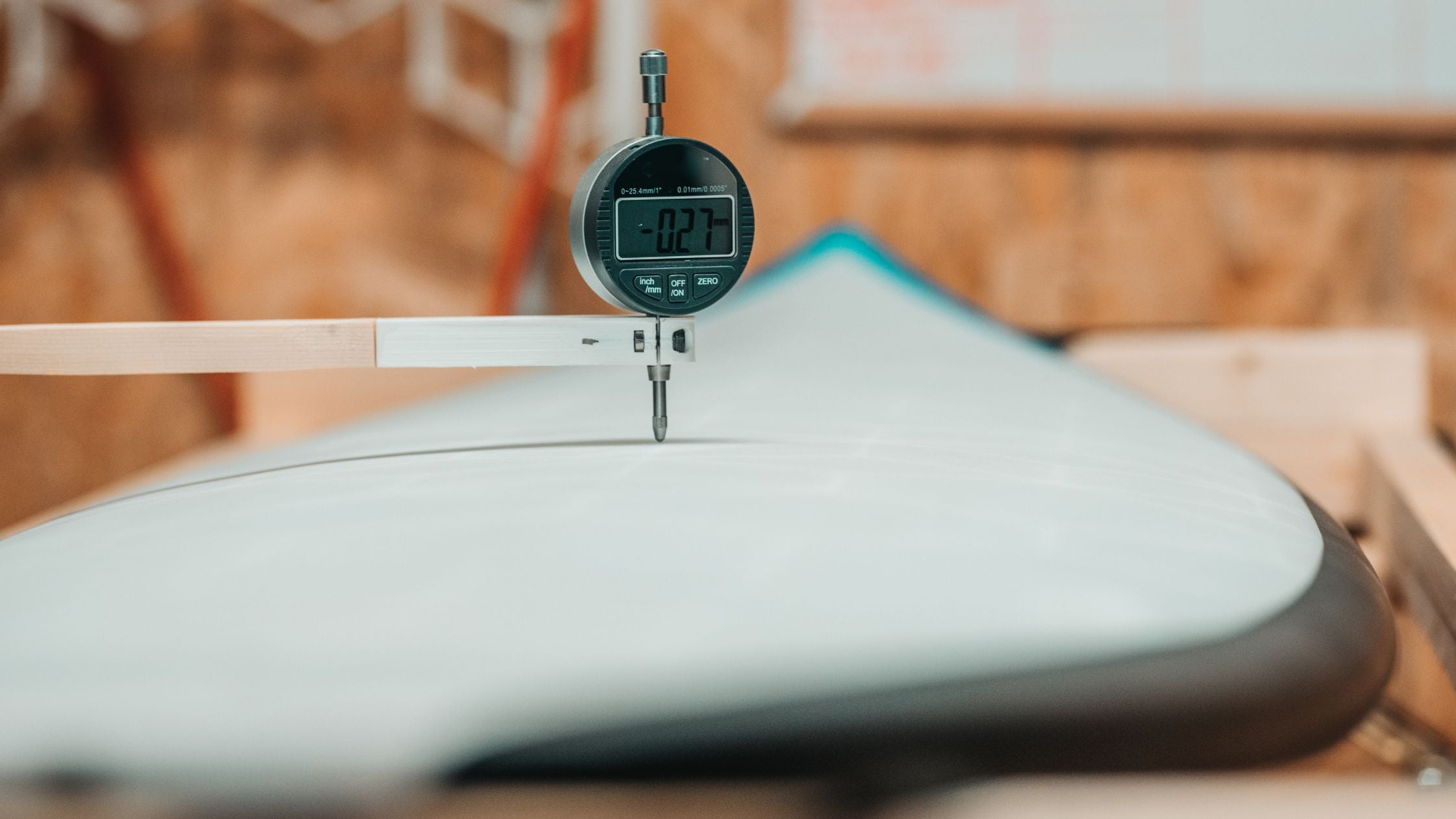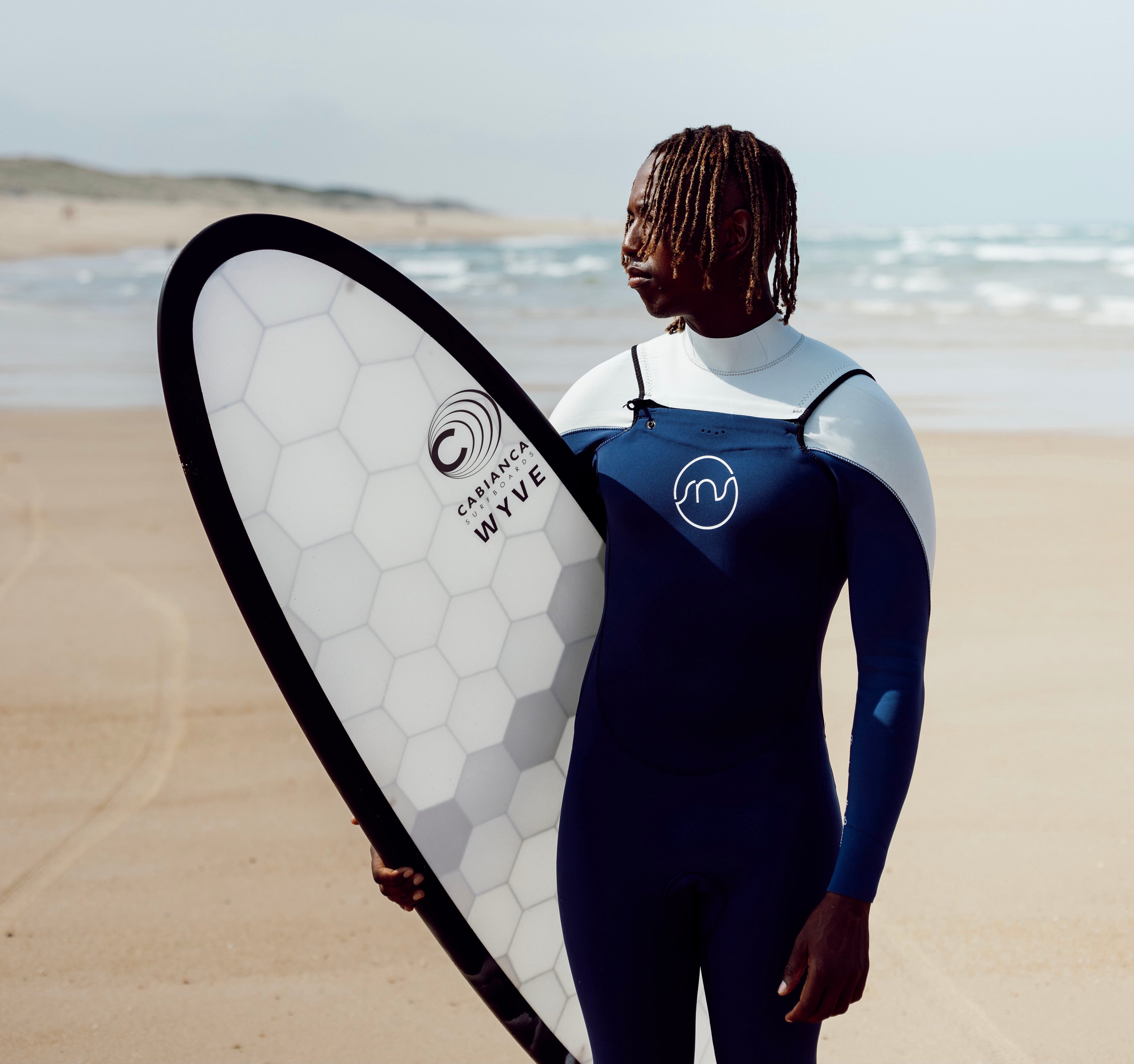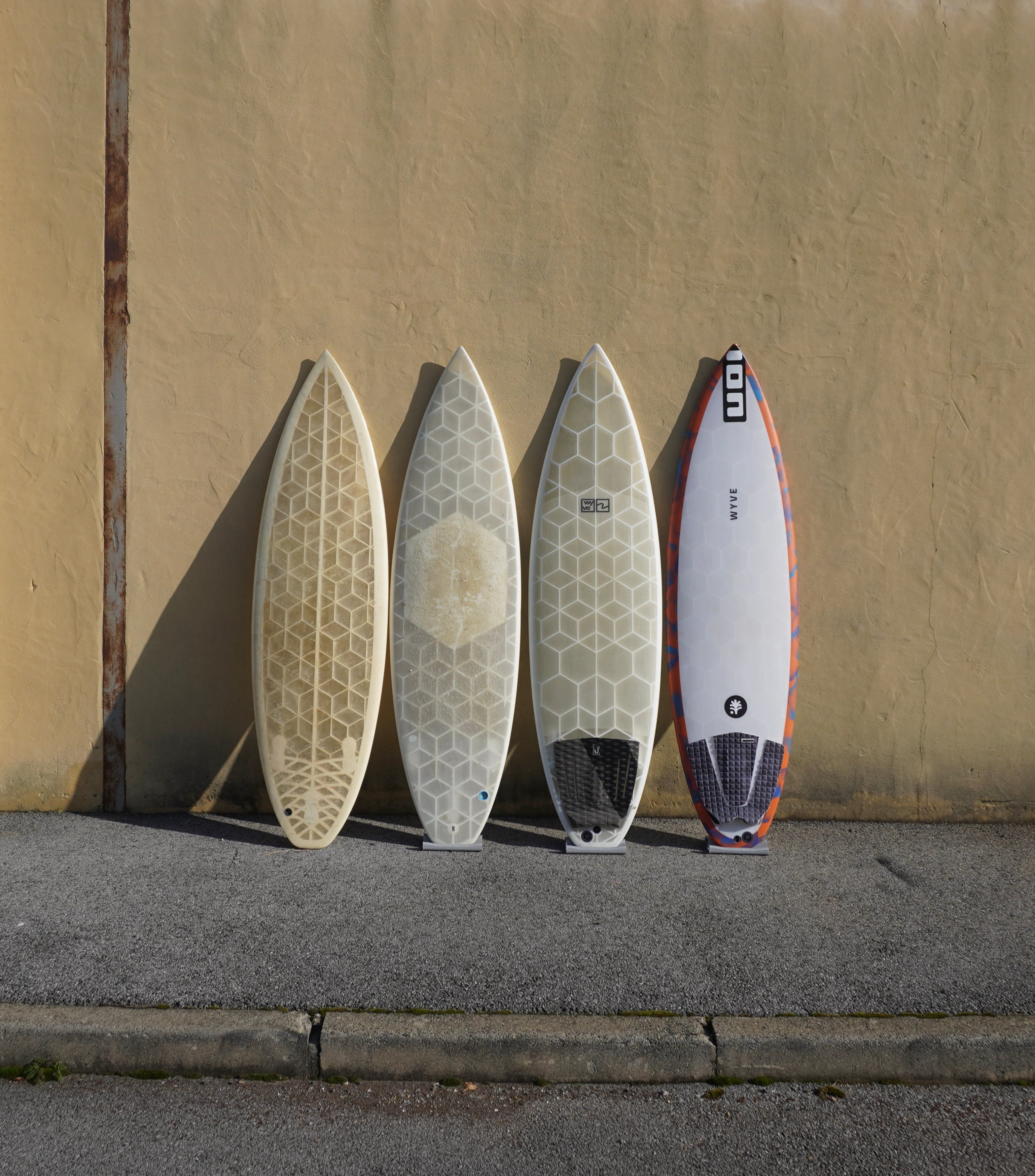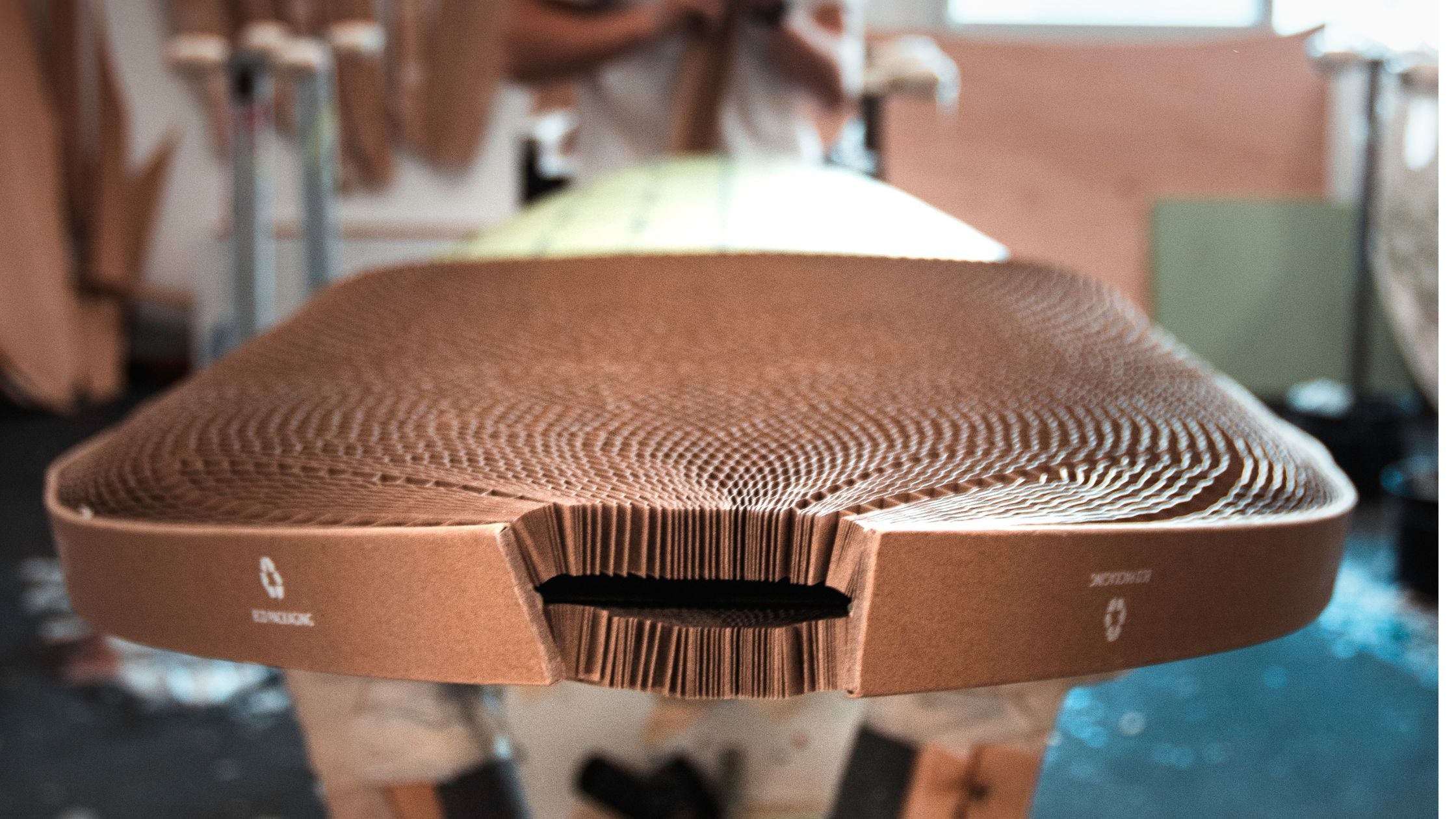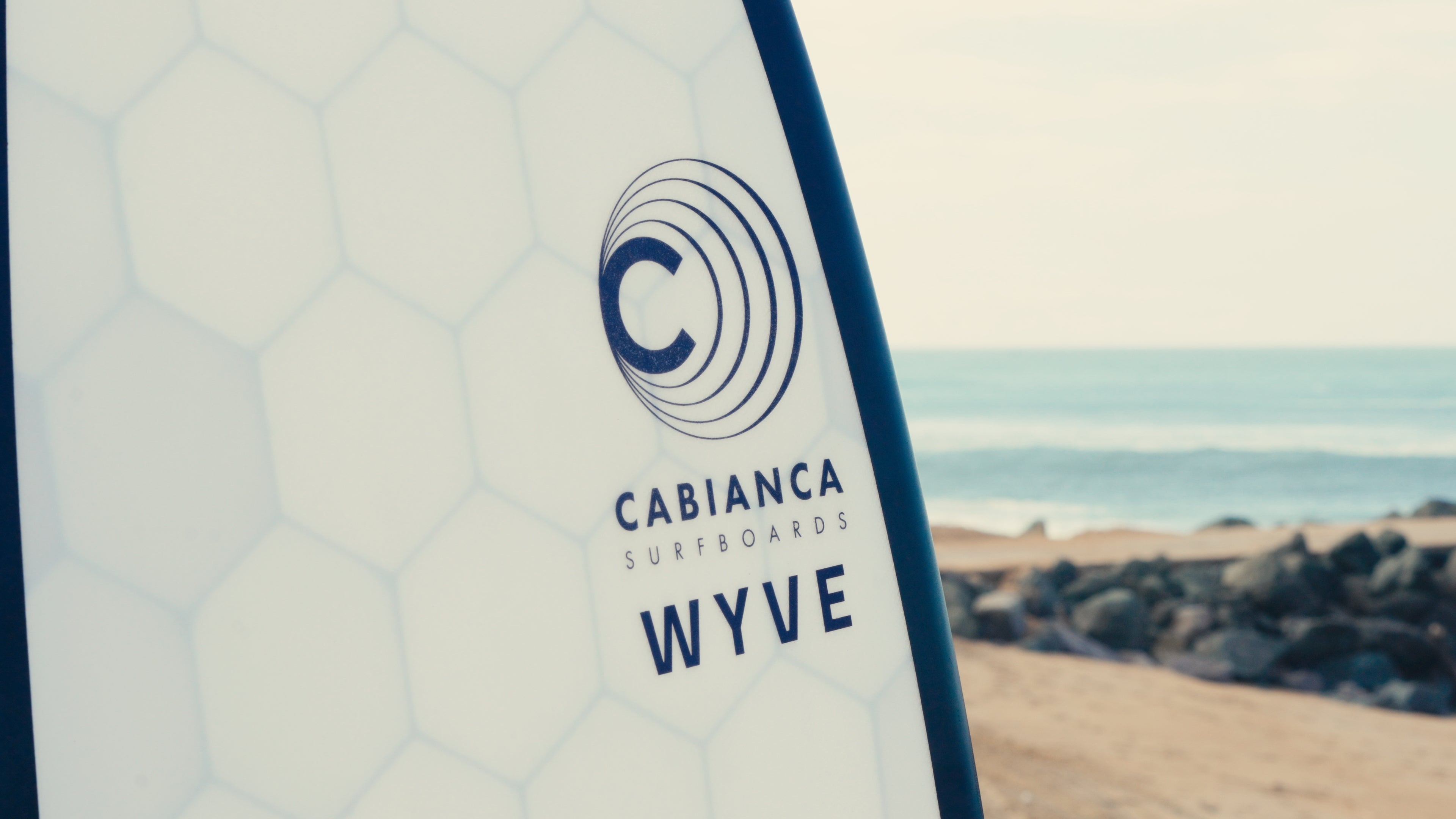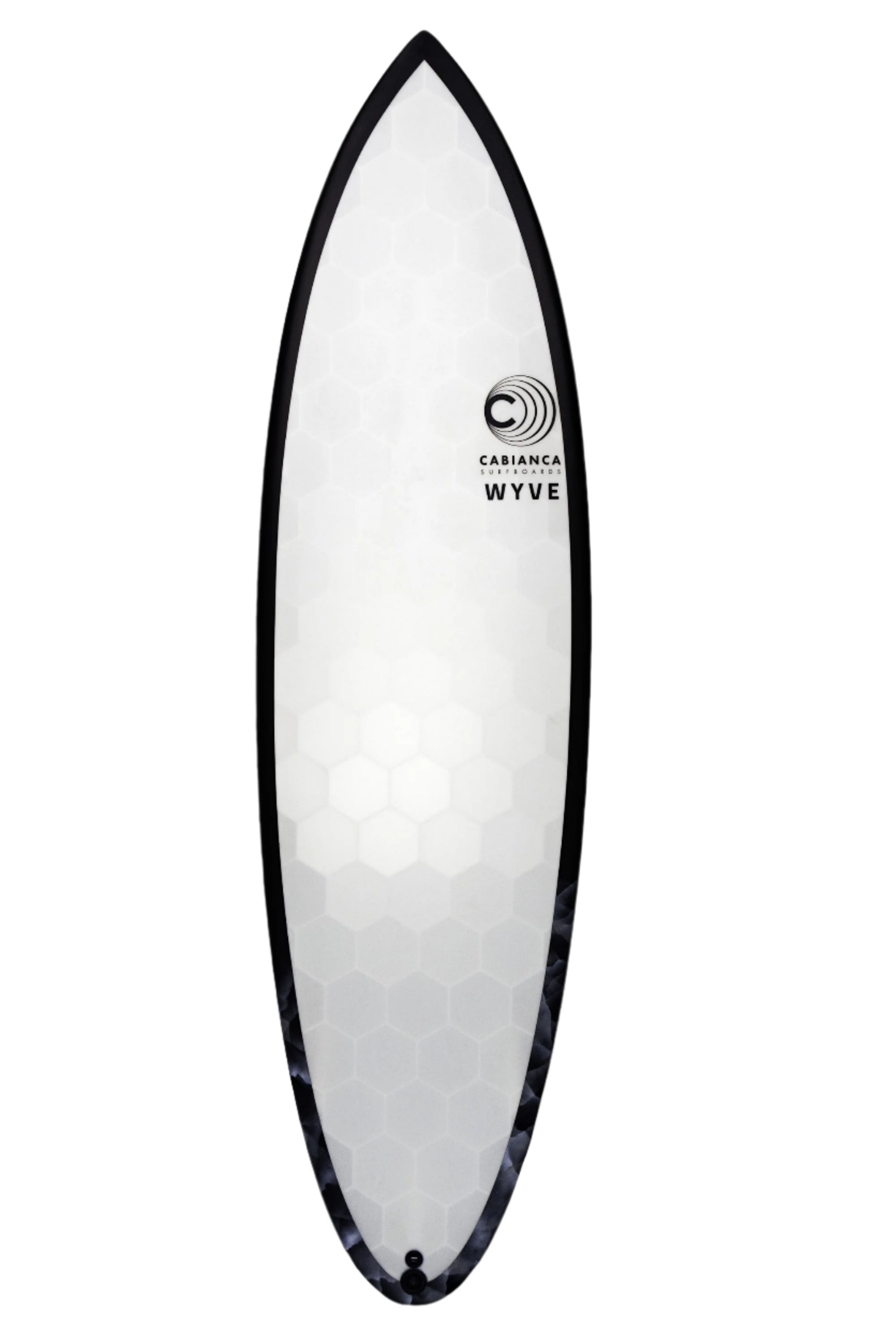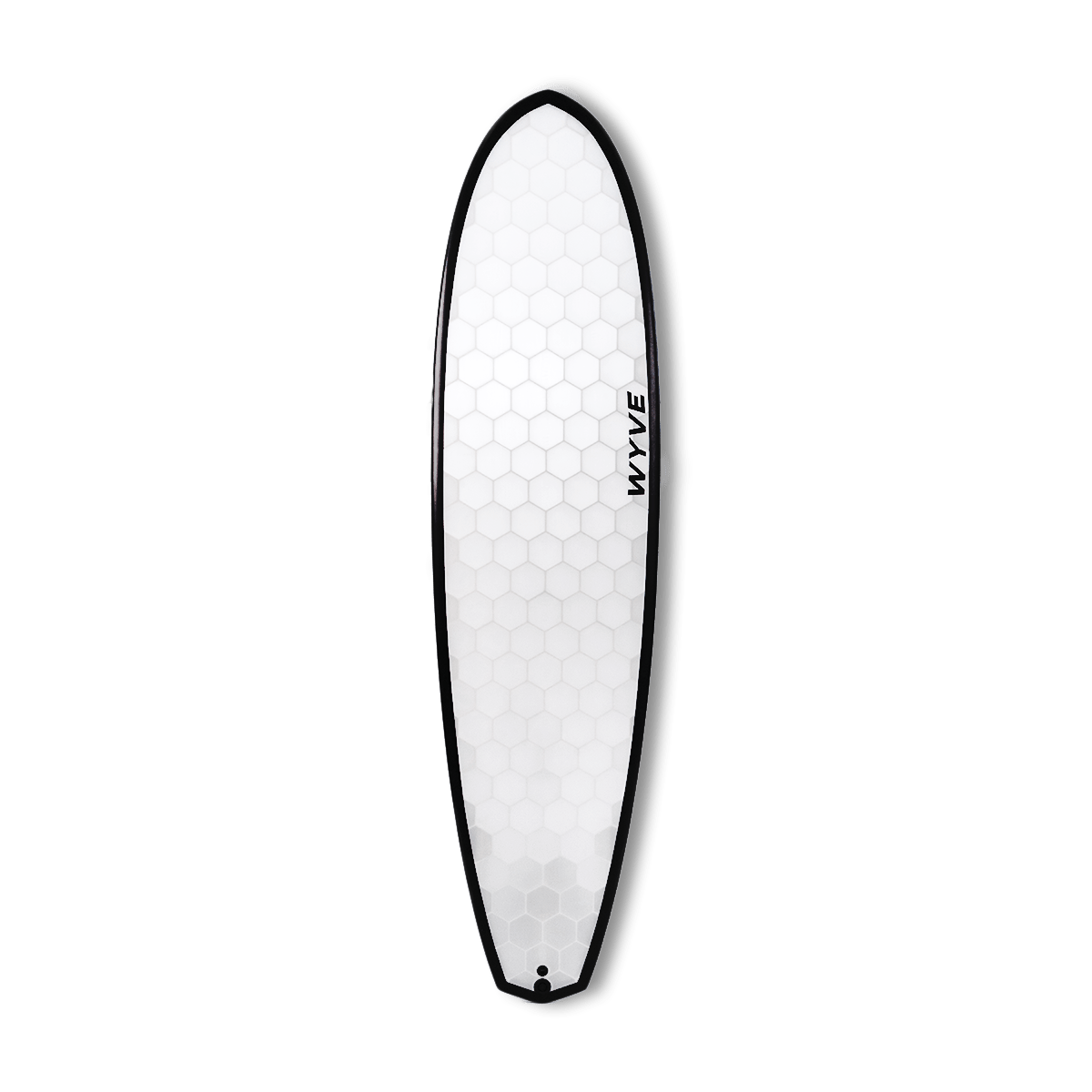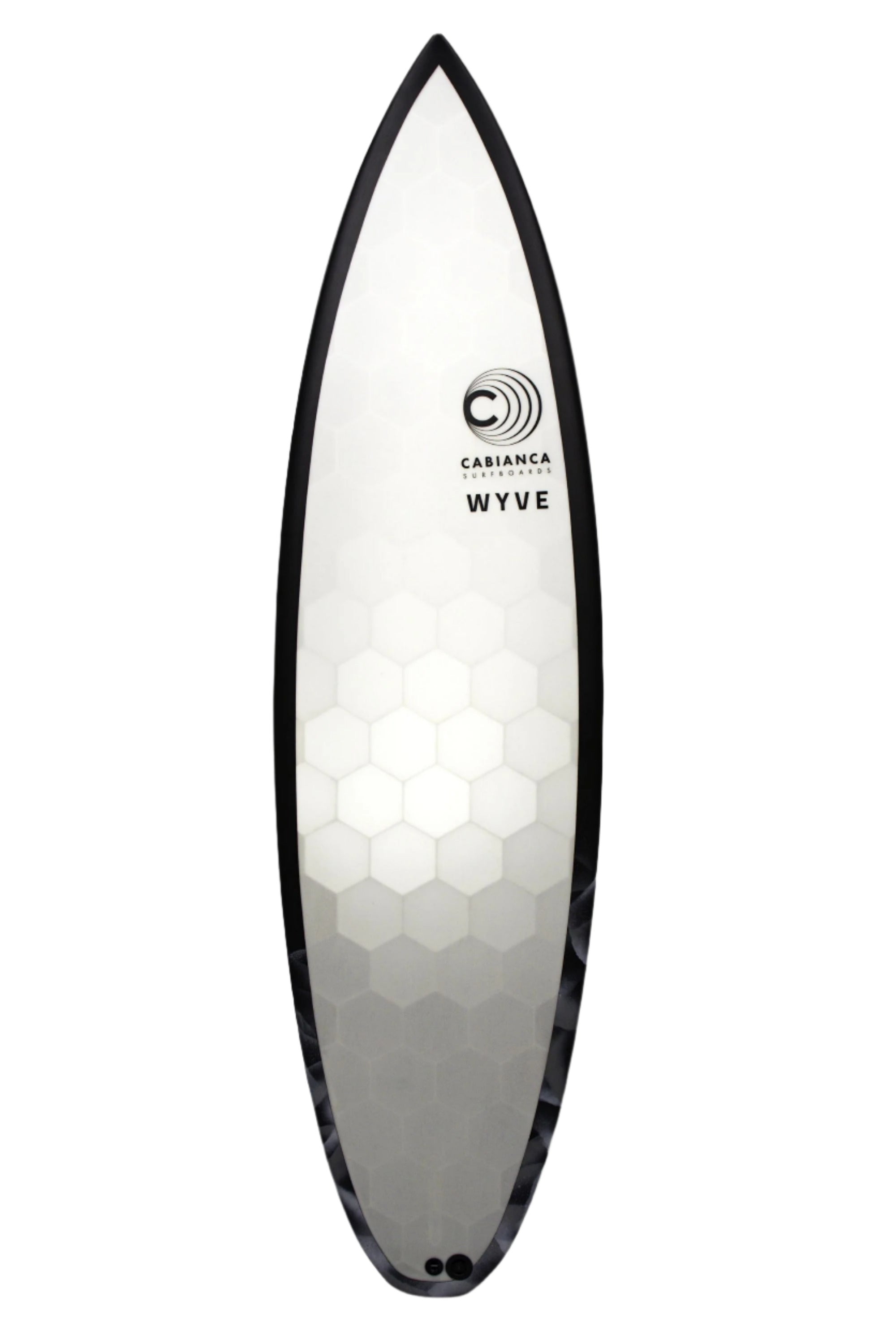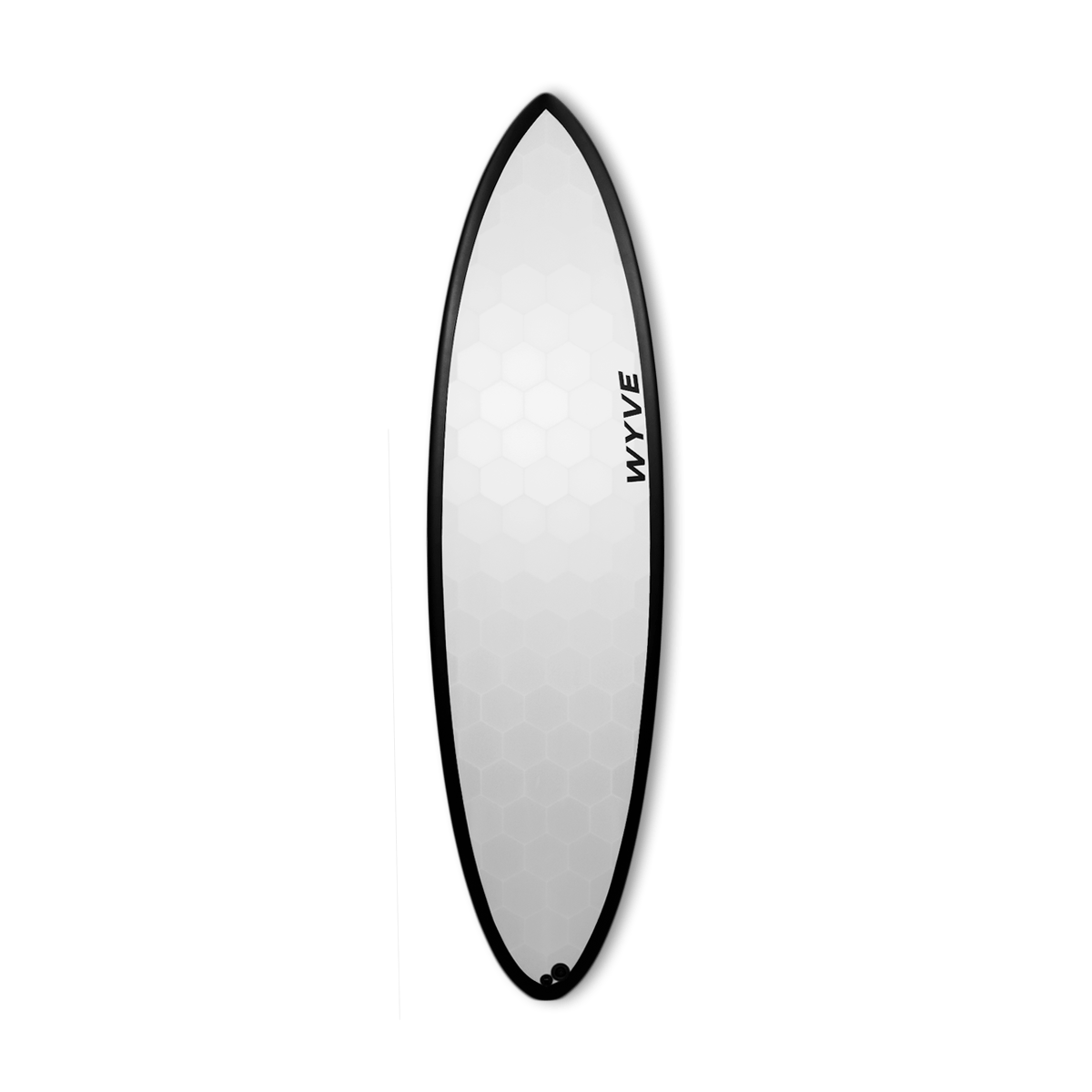A. Presentation of the subject
The volume of a surfboard is a fundamental aspect that significantly influences your surfing experience . As a surfer, you have probably heard this term mentioned many times, but do you really understand its full importance and meaning ?
This in-depth guide will immerse you in the world of surfboard volume , demystifying preconceptions and providing you with crucial information for choosing the board that's best for you.
B. Importance of understanding the role of volume in a surfboard
For surfers, understanding the volume of a board is as crucial as knowing the waves. It's a factor that affects almost every aspect of your performance on a surfboard . Volume determines how well your board floats in the water, your ability to paddle efficiently, your stability , your speed , and even your ability to take sharp turns.
In other words, volume is a key element in maximizing your enjoyment and performance on the water. It is therefore essential to understand how it works to make the right choice of board and develop as a surfer.
With this in mind, let's explore surfboard volume in- depth and pragmatically .

II. Definition and Constituent Elements of the Volume of a Surfboard
A. Explanation of the volume of a surfboard
The volume of a surfboard is a crucial three-dimensional measurement that quantifies the amount of space the board occupies. This measurement is generally expressed in liters and represents the volume of water displaced by the board when submerged. In other words, it is the flotation capacity of the board.
B. Volume components: length, width and thickness of the board
To understand the volume of a surfboard , it is essential to know the three main components that determine it:
1. Length: The length of the board is measured from the nose (front of the board) to the tail (rear of the board) . It directly influences the speed of the board, the ability to catch waves, and stability. In general, the longer a board is, the faster it is, but it can be less maneuverable.
2. Width: The width of the board is measured from rail to rail, perpendicular to the length. It affects the stability of the board and its ability to stay flat on the water. A wider board generally provides better stability, but may be less responsive.
3. Thickness: The thickness of the board is measured from the bottom (hull) to the top (deck). It influences the buoyancy of the board, that is to say its ability to stay on the surface of the water. A thicker board can be more stable and provide better buoyancy, but it can also make it less sensitive to the surfer's movements.
These three components, combined in a specific way, determine the total volume of the board. Understanding how they interact is essential to choosing a board that matches your skill level, your surfing style, and the conditions in which you plan to surf.
C. Impact of buoyancy on paddling and wave-taking capacity
Buoyancy , directly related to the volume of the board, plays a determining role in a surfer's paddling and wave catching ability. Here's how it works:
The buoyancy generated by the volume of the board allows the surfer to effectively float on the surface of the water while maintaining an extended position for paddling. The more volume the board has, the more lift it offers , which means you have to exert less effort to stay on the surface .
When paddling to catch a wave, a board with adequate volume allows you to glide quickly through the water. Insufficient buoyancy will make paddling difficult and hamper your ability to catch waves, as you will struggle to maintain an effective paddling position.
D. Relationship between volume and ease of paddling
The volume of the board also influences the ease of paddling. The more volume the board has, the easier it is to paddle. It provides better stability, allowing the surfer to paddle with less effort and maintain balance while waiting for the next set of waves.
A board with adequate volume makes it easier to paddle through surf zones and currents. It offers better maneuverability to adjust your position on the wave and optimize your chances of catching it at the right time. So, board volume is key to maximizing your paddling time and your ability to pick the best waves.

IV. Role of Volume in Board Stability
The volume of a surfboard plays a vital role in its stability, which is a determining factor in the surfer's performance. Here is how volume influences the stability of the board:
A. Definition of stability and its relationship with volume;
The stability of a surfboard refers to its ability to remain balanced on the water, whether when the surfer is waiting for a wave, paddling, or standing to perform maneuvers. The volume of the board is directly linked to this stability. The more volume a board has, the more stability it offers.
Adequate volume allows the surfer to stay upright on the board with confidence, even in rough wave conditions. The increased stability provides a solid platform for maneuvering and maintaining control over the board, which is essential for an optimal surfing experience.
B. Effect of volume on board balance and maneuverability
The volume of the board also affects the surfer's balance and ability to maneuver effectively . A board with adequate volume provides better distribution of the surfer's weight, which helps maintain balance while surfing.
This results in greater maneuverability, as the surfer can adjust their weight and downforce to perform tight turns or more aggressive maneuvers.
A board that is too small could be unstable and difficult to control, while an oversized board could sacrifice maneuverability for more stability.
C. Influence of volume on the ease of taking turns
The volume of the board affects how easily a surfer can take turns. A board with appropriate volume allows for a smooth transition from rail to rail during tight turns or maneuvers at the top of the wave.
Too much volume can make a board slow and unresponsive in turns, while too little volume can cause a loss of balance during maneuvers. Finding the right balance of volume is essential to maximizing stability while maintaining the maneuverability needed to execute turns smoothly and efficiently.

V. Importance of Volume in the Speed of a Surfboard
Speed is one of the most sought after aspects in surfing and the volume of the board plays a crucial role in achieving it. Here's how volume affects the speed of a surfboard:
A. Explanation of the relationship between volume and speed;
The relationship between the volume of the board and its speed is direct. The more volume a board has, the more speed it is likely to generate. This is mainly due to the increased buoyancy that the volume provides.
When a surfer paddles to catch a wave, sufficient volume allows the board to float higher in the water, reducing drag and promoting faster speed. Therefore, plus, when riding down the wave, a bulky board can plan more efficiently, allowing it to maintain speed.
B. Impact of volume on drag reduction;
Reducing drag is a key element of speed in surfing. Adequate volume helps minimize drag by keeping the board out of the water when the surfer is paddling or during high-speed maneuvers. This means the board glides more easily through the water, resulting in increased speed.
Insufficient volume can result in a board that sinks too far into the water, creating excessive drag that limits speed. Therefore, to maximize the speed of a surfboard, having the appropriate volume is essential.
C. Influence of volume on the ability to generate speed
In addition to making it easier to pick up speed, volume also plays a role in a board's ability to generate speed on its own. A board with adequate volume is capable of producing speed due to its profile and shape.
When the surfer performs maneuvers or seeks additional speed in the wave, the volume supports the generation of this speed by providing a stable platform and minimal drag . As a result, a board with the correct volume allows the surfer to fully explore the speed possibilities in different surf conditions.

VI. Volume Variations Depending on the Type of Surfboard
The volume of a surfboard can vary greatly depending on the type of board you choose. Understanding these variations is essential to selecting the ideal board. Here is how the volume varies depending on the types of surfboards:
A. Differences between longboards, shortboards and fish boards
1. Longboards: Longboards are generally characterized by greater volume than other types of boards. Their length, which can exceed 9 feet (2.7 meters), allows them to have a significant volume. This makes them very stable and suitable for beginners, small waves and surfers looking for a classic riding experience.
2. Shortboards: Shortboards are shorter, narrower and have less volume than longboards. They are designed to prioritize extreme maneuverability and are ideal for experienced surfers looking for high-level performance in medium to large sized waves.
3. Mini Malibu : Boards of this type fall somewhere between longboards and shortboards in terms of volume. They are shorter than longboards but wider and thicker than shortboards. The Mini Malliu fish are appreciated for their versatility, guaranteeing good buoyancy while allowing radical maneuvers.
B. Adaptation of the volume according to surf conditions
1. Small waves: When waves are small and lack power, a board with higher volume is recommended. This extra volume helps the surfer catch waves more easily and maintain speed in low-energy surf conditions.
2. Powerful waves: On the other hand, in powerful and hollow waves, a board with a lower volume is preferable. Less volume means better handling and greater responsiveness, which is essential for executing tight turns and high-speed maneuvers.
3. Intermediate Conditions : For varied surf conditions, many boards are designed with moderate volume, providing a balance between buoyancy and maneuverability. These versatile boards are capable of performing in a range of different conditions.
Ultimately, choosing your surfboard volume should be tailored to your skill level, the type of waves you plan to ride, and your personal style. There's no one size fits all, and experimenting with different options will help you find the board that's best for you.
VII. Factors to Consider When Choosing Surfboard Volume
When choosing the volume of your surfboard, several factors should be considered to ensure an optimal surfing experience. Here are the main factors to consider:
A. Surfer Skill Level
-
Beginner : Beginner surfers generally benefit from boards with higher volume. Extra volume provides better buoyancy, making it easier to paddle and catch waves. This allows beginners to progress more quickly and gain confidence.
-
Intermediate : Intermediate surfers can opt for boards with moderate volume. They have already learned basic skills and are looking to improve their maneuverability while maintaining some buoyancy.
-
Advanced : Advanced surfers generally prefer boards with lower volume. They are comfortable in the water and seek maximum maneuverability to perform advanced maneuvers in more powerful waves.
B. Surfing conditions and wave types.
-
Small waves: If you plan to surf primarily in small wave conditions, a board with a higher volume is appropriate. This will help you catch waves more easily and maintain speed.
-
Powerful waves : for powerful and hollow waves, choose a board with a lower volume. Less volume allows for better maneuverability, essential for sailing in demanding conditions.
-
Intermediate Conditions: If you plan to surf in a variety of conditions, opt for a versatile board with moderate volume. This will allow you to perform in various types of waves.
C. Personal Preferences and Surfing Style
-
Surfing Style : Your personal surfing style plays a crucial role in choosing the volume of your board. If you prefer a flowing, longboard-esque style, a higher volume may be suitable. For a more radical and dynamic style of surfing, consider a board with a lower volume.
-
Maneuver Preferences: Consider the types of maneuvers you want to perform. If you intend to perform tight turns and aerial tricks, a board with a lower volume can provide the necessary responsiveness. For long, smooth turns, a higher volume may be preferable.
Choosing the volume of your surfboard is a personal decision that depends on several factors . Consider your skill level, the surf conditions you'll encounter, and your preferred surfing style to find the board that's best for you. Experimenting with different options will help you narrow down your choices and optimize your surfing experience.

VIII. The Truth About Surfboard Volume
Now that we've explored the role of volume in surfboard design in detail, it's time to demystify some essential aspects related to volume.
A. Volume as a Reference Point.
The volume of a surfboard has become a common reference point when choosing a board. However, it's important to remember that volume is just one element of many that contribute to your board's performance. It's only part of the complex equation of surfboard design.
B. The Reality of Volume
It is crucial to understand that the volume of a board as commonly quoted is only a numerically designed value. Files generated by computer-aided design (CAD) software indicate a theoretical volume. However, the actual board may differ due to various factors, including loss of volume when cutting bread.
C. The True Volume of a Board
To determine the true volume of a board, it would be necessary to submerge it in water to measure the amount of water displaced. However, this precise method is not commonly used. Accordingly, the volume as stated is an approximation.
D. Limitations of Digital Design
Surfboard cutting machines, while accurate, cannot always cut perfectly to digital specifications. When hand shaping or finishing, adjustments are sometimes necessary, which can result in volume variations.
E. Volume vs. Other Design Elements
It's crucial to remember that volume is just one of many design elements of a surfboard. Other factors, such as length, rocker curve, rail shape, width, and bottom contours , also have a significant impact on board performance.
F. The Fiberglass Enigma
Finally, the fiberglass used to reinforce a surfboard is generally not considered in the volume calculation. This adds an extra layer of complexity to understanding the board's performance.
In conclusion, although volume can be a useful starting point when choosing a surfboard, it should not be the only factor to consider. Surfboard design is a complex balance between many elements.
IX. Surfboard Volume FAQ
Q1: What is the volume of a surfboard used for?
The volume of a surfboard indicates how much water the board can displace and influences its buoyancy. It is used as a reference point for choosing a board suitable for the surfer's weight and skill level, as well as the surfing conditions.
Q2: How is volume calculated?
The volume of a surfboard is usually calculated using computer-aided design (CAD) software like Shape 3D , which creates a 3D model of the board. However, accurately measuring volume would require submerging the board in water to measure the amount of water displaced.
Q3: Is volume the only consideration when purchasing a board?
No, volume is just one element to consider. Length, width, thickness, rocker curve, rail shape, and other design factors are equally important to board performance.
Q4: How to choose the right board according to your needs?
Choosing the right board depends on weight, skill level, surfing style, the types of waves you plan to tackle, and your personal preferences. It is recommended to consult an experienced shaper or surf professional for personalized advice.
Q5: Can volume be a useful indicator?
Yes, volume can be a useful indicator, especially for beginner surfers or when choosing a second board. However, it should not be used in isolation, but in conjunction with other design factors.
Q6: Should we trust the volume indicated by the brands?
The volume indicated by the marks can be a starting point, but it can also vary depending on measurement methods. It's best to consider volume as a rough guideline and focus on other features of the board.
Q7: What do you think of the volume calculators found on the internet?
Online volume calculators can provide a rough estimate of the volume needed based on your weight and skill level. However, they are not a substitute for personalized advice from a surf professional or shaper, who may take into account factors specific to your surfing style and needs.
Ultimately, volume is an important element, but it should not be overestimated. Choosing the perfect board involves a holistic understanding of board design and how it interacts with your unique surfing style.
X. Conclusion
In this article we have explored in detail the role of volume in a surfboard. We looked at how volume influences buoyancy, stability, speed, and many other aspects of a board's performance. We also covered variations in volume depending on board type and factors to consider when choosing the ideal volume.
Warning Against Volume Obsession
It's essential to remember that volume is just one element of surfboard design. Obsession with volume can lead to mistakes in board choice . It's crucial to consider volume in conjunction with other design features, such as length, width, rocker, rails, and more.
Importance of an Informed Decision
Ultimately, choosing the perfect surfboard is a personal decision that depends on your weight, skill level, surfing style, and the conditions in which you plan to surf. It is recommended to consult an experienced shaper or surf professional for advice tailored to your needs.
When you understand the role of volume in a surfboard, you are better prepared to make informed decisions to improve your surfing experience. Remember, surfing is a combination of art and science, and choosing the perfect board will bring you closer to realizing your full potential in the waves.
So, head out into the water and enjoy every moment on your surfboard!
If you need help, we are always available via chat. A member of our team will be able to guide you in choosing your future surfboard.



